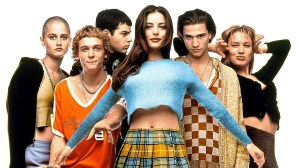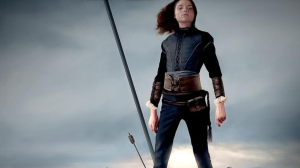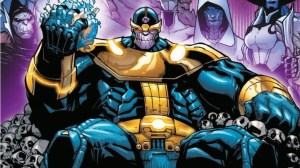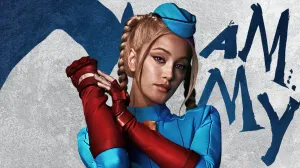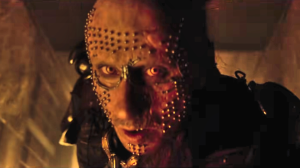David S. Goyer’s fingerprints are all over the comic book universe. He penned such feature films as Batman Begins, The Dark Knight, The Dark Knight Rises, Man of Steel, Batman v. Superman: Dawn of Justice, Blade, Blade II, and Blade: Trinity. He directed that third Blade installment, and executive produced the Constantine and Krypton TV series. And don’t forget his comic book work, including the iconic Justice Society of America run. His latest endeavor, The Sandman TV series on Netflix, is coming to an end after two seasons.
Videos by ComicBook.com
Based on the comic book of the same name, Sandman followed Morpheus (Tom Sturridge), the personification of dreams and one of several beings known as the Endless. After being imprisoned for over a century, Morpheus escaped his captivity and embarked on a quest to reclaim his power and restore his realm, the Dreaming. The second season took a more personal turn as Morpheus faced the consequences of granting his son, Orpheus (Ruairi O’Connor), a swift and merciful death. Those actions, however, attracted the attention of the Kindly Ones, a trio of ancient goddesses, who clashed with Morpheus and forced him to make a profound decision about his life and kingdom.
ComicBook caught up with Goyer to discuss Sandman’s second season, the dark fantasy’s cancellation, the potential for a spinoff, more Murderbot, The Blob remake, Blade, and more.

ComicBook: Arguably, the creative team was just scratching the surface of the Sandman Universe. What about a two-season format worked for this series?
David S. Goyer: The biggest issue was when Allan Heinberg and I were first pitching the show, I think we envisioned four, 10-episode seasons. Once we started figuring out Season 1, a lot of those early Sandman comics are only 17 or 18 pages long, and we found we were sometimes burning through three or four episodes. Obviously, it wasn’t a straight adaptation. The early Sandman issues were much more tied into DC continuity, but we were just burning through the source material faster than we thought. One ask from Netflix, which was fair, is that we focus on Morpheus, on Dream, as much as possible. One of my favorite arcs, he is barely in. It’s very Jonathan Carroll-esque. We figured out how to do it that involved him. He shows up at the end of it, but that was a big arc that we removed.
I wasn’t as involved in beating out Season 2, but I was surprised when Allan first told me that he wanted to do the Kindly Ones, effectively, for four episodes, because it’s the longest arc in the book. I was a little unsure, but it works. It doesn’t feel like we are skipping over things. The other thing is, even though we adapted a lot of the standalone issues, some of them proved expensive. I think we ended up adapting about half a dozen of them.
Audiences have speculated that Sandman was cancelled because of the allegations against creator Neil Gaiman. Did that factor in at all?
It really didn’t. I know some people might roll their eyes and say, “Yeah, right,” but we made this decision to end the show with a slightly extended season at least 18 months before the first rumor of that happened. I think when we first heard about it, we only really had three or four weeks left of filming Season 2. We were so far down the line that that wasn’t a consideration at all.
Numerous iterations of Sandman have lingered in developmental hell. Why has it been such a tough nut to crack?
The first is by Neil’s admission. He never completely had a plan for where it was going. He was young as a writer and making it up as he was going along. Maybe two-thirds of the way into it, when he started thinking of ending it, I think there were a lot of things he was working on that were unconsciously unified, but then he started consciously unifying everything together. It’s a bit of a feathered fish. It takes all these deviations. It wasn’t intended, initially, to be something clear-cut with a beginning, middle, and end.
It’s also weird. It’s dark fantasy. There are episodes that are full-on high fantasy. There are episodes that are mixed genres. All of the things — the various adaptations of which I was involved in, one of them as a feature — were regarded as bugs, but we thought were features. We said to Netflix when other people were interested in adapting it, “Let’s try to stop turning it into something it’s not.” It’s interesting to me. I was thinking of Sandman and a couple of the adaptations this summer. I recently saw Fantastic Four. I really loved it. I loved the retro feel of it. I loved the depiction of Galactus. It was spot on [Jack] Kirby and Moebius. There was a time when they were making the Fantastic Four at Fox and there was a feeling Galactus was silly, that Galactus was stupid. And Fantastic Four was too corny if you took it at face value, that it had to be dark and different.
I look at something like that and Metamorpho and Mr. Terrific showing up in the new Superman. All these attempts to make these stories, these comic book properties, and take out the weird comic book elements and make them more “serious;” largely, most of those fail. At the end of the day, if we just say, “Let it be what it is,” there’s a reason why it’s successful. There is a reason why these properties have existed for decades and decades and people keep coming back to them. You don’t need to turn it into something it is not. That’s just something I have been thinking about this summer, in particular.
Sandman had mapped out Season 2 before Season 1 even premiered. What caused the writers’ room to shift focus once production began gearing up?
It was really the liberation of knowing we were writing towards an end. If you’ll notice, the first season feels more episodic, with a Dream case of the week, whereas Season 2 feels like it has a very clear throughline. Then, having the opportunity to make some of the decisions that Neil hadn’t made when writing the book. Allan embellished the relationship with the Corinthian. Things like that, I think, were additional add-ons. I really like the relationship with Puck and Loki, which were built upon even further than in the comic books. They were mischievous, delightful tricksters.
What did Dream learn about himself as a father? And what kind of parent did he make?
When we pitched the show, there were two North Stars. All the streamers said, “What is this crazy show about? Can you distill it down?” We said, in its most basic form, Sandman is about a god who regards himself as unchanging, but who gradually changes and grows to love and is capable of forgiveness. In the act of doing so, he becomes mortal and dies. That is his arc. It is a very clear arc that you see in the second season.
We also said the show is about this dysfunctional family. We pitched the Endless as this really dysfunctional family. It really ends on his capability of forgiveness and change, and that wonderful dinner scene at the end with the Endless.
The other thing that the streamers didn’t want to hear about, because it was too abstract, and the team really stuck the landing with at the end, was by doing the callback to Shakespeare and the nature of stories and how stories end. So that was always a story about a god who becomes mortal and dies, and the story about a dysfunctional family and the love. You hate the people you love and love the people you hate. In the back of our minds, that was something we always brought back to, despite how crazy the story became. When viewed through that lens, it’s simpler than people give it credit for, in a way.
Dream’s funeral was essentially lifted straight from the pages of the comic books. How did you streamline it for the series and what made that sequence so poignant, beautiful, and haunting at the same time?
First of all, you will notice the final episode is longer than the others. I think it’s closer to 70 minutes long, so we did cheat a little. It’s almost two episodes in length. In the comic books, there were even more characters who appear at the wake. But if you think about the second season of Sandman, there are a ton of characters. Somebody online was giving us grief for not including the Egyptian characters. Something had to go. I was impressed that Allan was able to flesh out as many characters as he did.
I also love the end credit scene with the Kindly Ones, and the candle being lit and the extinguishing at the very end. That really is a metaphor for the permanence of life and, also, for stories. I was surprised by that scene because I didn’t know Allan was going to do that. If it had been all sweet and heartwarming, it would have felt very treacly. It was all grim, it would have felt inappropriate. It’s bittersweet. It was sweet and sour. It had to be both.
We have an adult Daniel in the series finale, contemplating his place in the world. It almost felt like a set up for a third season down the road. Was that the intent at all?
It’s a possibility. There are other stories involving Daniel as the new Dream. There are untold stories about some of the individual Endless. There is other material. With Night and Time, we took a little bit of overtures and were able to weave that in. But I know the show is doing quite well right now, so yes, there’s always a possibility that we could revisit it or the show could be reborn in some different incarnation.
What can viewers expect from that bonus episode with Death?
One of the things that we pitched all the streamers originally was 11 episodes per season and we wanted a bonus episode to drop after the initial run. The idea came from the Doctor Who Christmas episode. All the streamers said no to that. “No, we just want 10. We don’t want the extra one,” except for Netflix. We just wanted to do something that was playful. This is Allan’s take on Death: The High Cost of Living. In the same way, the 11th episode, the bonus episode in Season 1 was an adaptation of Dream of a Thousand Cats and the other standalones, this was something that was really a nod to the fans to do something different. It just felt appropriate that we should take Morpheus’s journey from beginning, middle, and end, but then have a post-season episode with Death. Again, it’s taking what some people would consider bugs and turning them into features. God bless Netflix because they were willing to play ball with us and do something playful.
Shifting gears, production for Murderbot’s second season will be kicking off in Toronto soon. The finale culminated with the title character leaving to forge his own path. How does he go about achieving that?
I would say there are five other books that Martha Wells has written, so there’s a lot more material. I don’t know if the show will last five, six seasons. The only difference between the books and next season is that the economics of making a TV show requires you to book series regulars. Now that we have done a season and have X amount of series regulars, most of those characters aren’t in the second book. You might see a little bit of a remix of a couple of the books. I’ve been away this whole month, so we haven’t even sat down yet and talked about the next season. We only got the pickup three weeks ago.
In some ways, it’s great, and in other ways, it’s complicated. Once you admit to caring about people, that makes you more vulnerable and you are open to being hurt. And, there’s also the ongoing mystery about what really happened prior to his memory being wiped and killing all those people, which he is quite interested in solving.
You have a horror film in the pipeline. What makes The Blob ripe for a remake?
First of all, the last one was done in the ’80s and there’s been massive technological advancements. One of the decisions we made is, instead of the Blob coming from space, it’s something that is made in the lab. If you think of horror as a cautionary tale or reflecting contemporary fears … there was a lot of fear about Sputnik and space when the first Blob came out. A lot of things going on right now – the use of AI and gene editing and the slippery slope of all that work entails – that is our approach to this film. I am also excited because the story unfolds in not-quite real time, but over the course of a single day. It’s great. We are just doing some research and development right now. Warner Bros. gave us some money to do some R and D research on Blob effects.
One iconic scene finds the Blob invading a movie theatre and then oozing out its doors. Was that important to squeeze in, too?
Yes, without giving too much away. It’s kind of self-referential. So, absolutely.
Fantastic Voyage is also in development. What’s the update on its status?
Obviously, it’s a remake of a classic film. I was approached by Fox almost a decade ago. They have been developing it forever. I did a treatment and James Cameron liked it. We got along well. It’s frustrating because we got very close. We were prepping and it fell apart because there was a regime change right before we got the green light. We had already been talking about casting. It’s my hope that that is one we can revisit. The script was fantastic. Being able to work on a movie with both director Guillermo del Toro and Cameron, who I had worked with both before, it just felt like a perfect situation.
Blade is being remade. You penned the scripts for Blade II and Trinity, directed the third film, and helped create the Blade TV series. Are you done with that character or do you want another stab at him?
It’s been a long time. It’s been 20 years since the last movie. I am perfectly happy. I loved Robert Pattinson’s Batman. It’s not as if I worked on an iteration of a character and can’t appreciate a newer iteration. I wrote Man of Steel and I liked the new Superman. So, I am totally ready to see another iteration of Blade.
I have been puzzled why they are having so much trouble because they already had Mahershala Ali. He seemed like the perfect casting for it. I don’t know what they are doing. I’ve had a lot of people and journalists ask, “Why don’t you go in there and help them with it?” Prior to that happening, I hadn’t really considered it. But I had my agent call Marvel about six months ago to say, “Do you guys need any help with it?” And they said, “No, we’re good. We’re on the right path now.” I wouldn’t say no to it. It would be interesting to revisit it decades afterwards.
Wasn’t a Nighstalkers spinoff in the works?
New Line had asked me to do that, to introduce some characters. The Nightstalkers had seemed like the obvious choice to spin off from it. That’s how we ended up casting Jessica Biel, because she had been in the Texas Chainsaw Massacre remake. That seemed like the obvious choice. Ryan Reynolds was not an obvious choice, but I was able to convince him. He had to put on 26 pounds of muscle. The movie performed well. It actually performed better than the first movie did, but not as well as the second, and not well enough to warrant a spinoff.
Where would you have gone with those characters?
I knew it was going to be introducing Morbius, way back then. I am a big comic book geek and it would have been fun to involve elements of the Darkhold.
As someone who has been entrenched in the DC Universe, have you had any interaction with James Gunn or Peter Safran? Are there any characters you’d like to revisit or other names that need to be make their film debut?
I have not. I have never met either. I’m a big fan. I never thought I’d live to see a live-action Metamorpho and some of these more tertiary characters, as well. I haven’t had a conversation with them about it. I think the problem is having worked with some of the biggies, I don’t necessarily want to work with the biggies anymore. I’d be more inclined to want to work with some of the more unusual ones. I’m not sure if those would necessarily get made. I’ve done so much of it.
Besides Sandman, I have not been working in the comic book world for five or six years. I’ve already done a lot of it. I would never say never. I am trying to think of a character that I would be interested in taking a crack at. None of the big seven or eight. You can take bigger swings with those tertiary characters because they are not starring in three or four separate books. B characters. We introduced a ton of them in our JSA run … I really like Doctor Fate. It was interesting to see Doctor Fate in Black Adam.
All episodes of The Sandman are now streaming on Netflix.
This interview has been edited for length and clarity.

